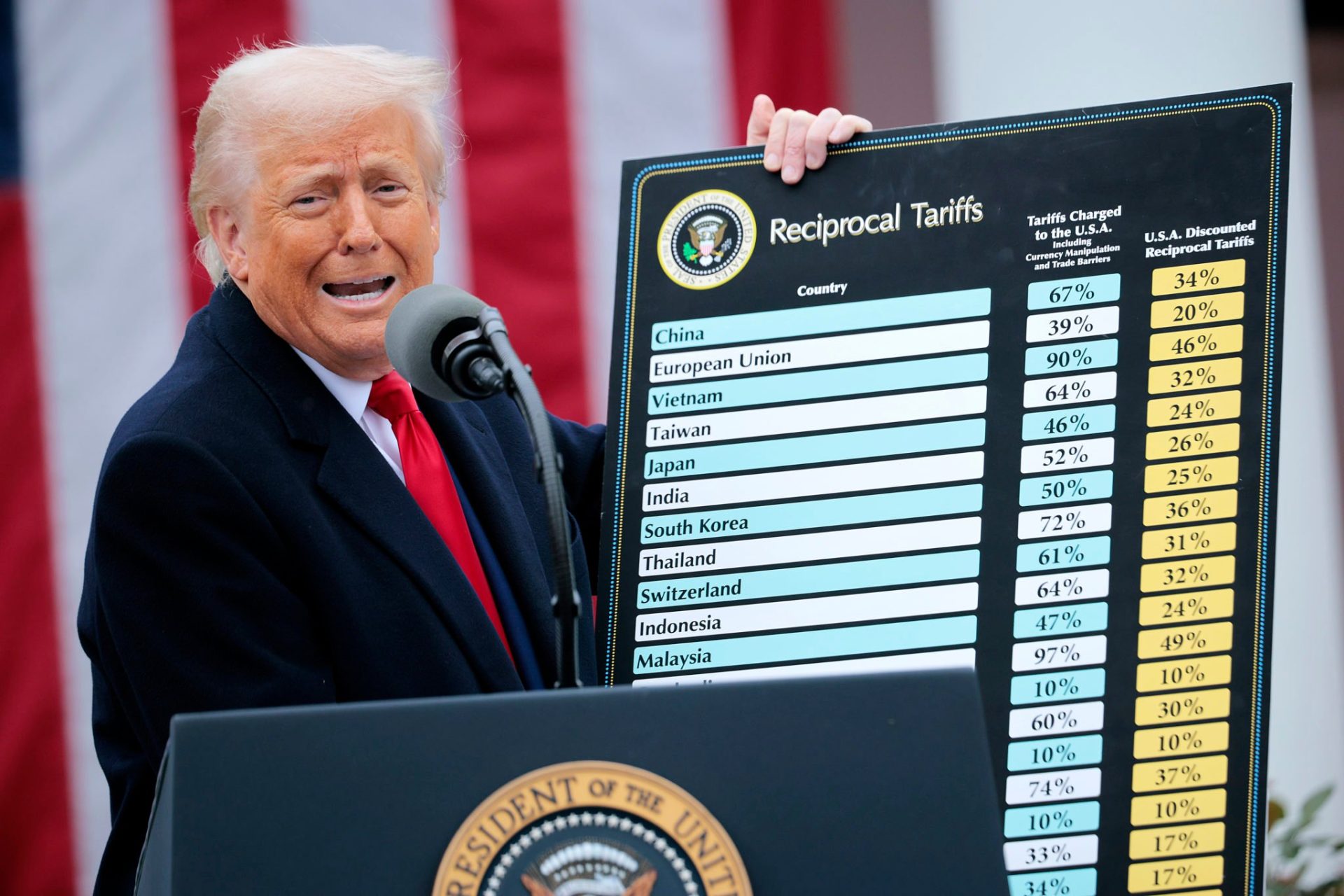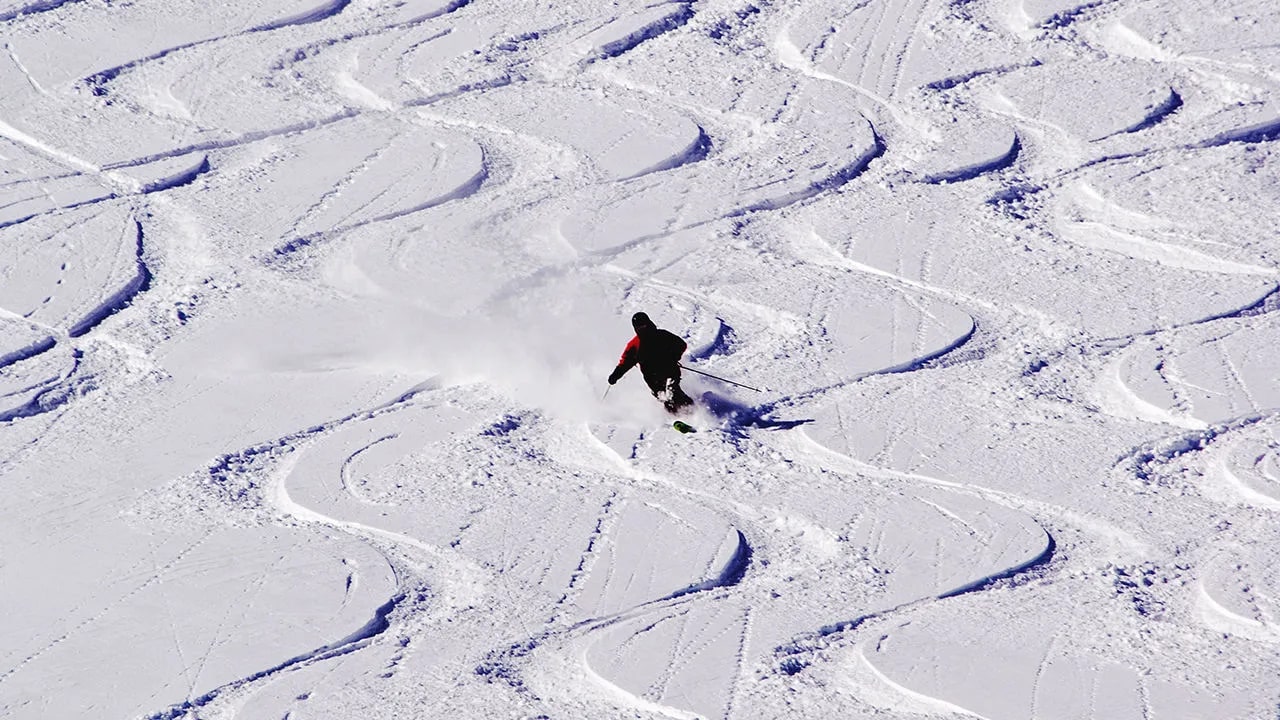
A new round of sweeping tariffs imposed by the Trump administration this month is sending shockwaves through the American ski industry. Effective April 5, a 10% global tariff has taken hold, with a 20% reciprocal tariff on goods from the European Union that went into effect on April 9. The moves come under the International Emergency Economic Powers Act (IEEPA) and are part of what the White House describes as an urgent response to persistent trade deficits. But for the ski world, the impact is direct, immediate, and expensive.
Nearly every component of a ski resort—from the lifts that move people uphill to the snowcats that groom terrain—relies heavily on European engineering. Austria, Switzerland, France, and Germany are the powerhouses behind many of the snow industry’s most critical tools. Even essentials like avalanche control systems, tuning machines, ski boots, bindings, and high-end skis themselves often trace their origins back to the EU. With tariffs kicking in mid-shipment, one industry insider, Peter Landsman who runs The Lift Blog, a skiing news website that focuses on news regarding chairlifts, noted on social media that a $20 million gondola on its way to a U.S. resort would now be $4 million more expensive before it even hit port.
Financial markets have reacted to the news with visible shifts. Vail Resorts (NYSE: MTN), the largest publicly traded ski operator in North America, has seen its stock fall 15% over the past three trading days and is down more than 60% from its all-time high. Analysts have pointed to increased capital expenditures and margin compression as reasons for the decline. This basically means investors are nervous that it’s going to cost more to run ski resorts—and that profit margins are getting squeezed. If things keep getting more expensive, it could be harder for big companies like Vail to grow or keep prices steady.
The administration says the tariffs are designed to address structural trade imbalances. According to the White House, persistent U.S. trade deficits have weakened the country’s industrial base and created dependencies on foreign imports in areas seen as critical to economic and national security. The new tariffs are positioned as a mechanism to encourage more domestic manufacturing and reduce reliance on foreign suppliers. The goal is to create good in-house in America rather than bring it in from elsewhere.
Ski area infrastructure is largely built on imports. Many resort essentials, including lifts, snowmaking systems, and snow groomers, come from long-established European manufacturers. North American alternatives exist but are limited in scale, meaning many operators expect to continue relying on EU-based firms. Equipment orders already placed or en route may be directly affected by the new tariff rates. This is because there aren’t many U.S. companies that make this kind of gear at the same scale as in Europe. So when the cost of importing that equipment goes up overnight, resorts are left to deal with a bigger bill, even for things they already ordered.
The timing of the new trade measures overlaps with existing economic challenges. Ski resorts are still managing the lingering effects of pandemic disruptions, rising insurance, and energy costs. With broader inflation pressures still present, the added costs associated with tariffs could lead to pricing changes for gear, lift tickets, and vacation packages. It’s possible that prices for virtually everything at resorts could be higher next season.
Local economies tied to mountain tourism may feel secondary impacts. Ski town businesses—from lodging to retail to food service—depend on stable resort operations and consistent visitor traffic. Any decrease in skier participation or delay in capital investment by resorts could affect employment and seasonal revenue in those areas. If people can’t afford to go skiing and stop coming, ski towns would take a big hit.
The ski industry’s relationship with the current administration is a mixed bag. On one hand, it’s been easier for resorts to get permits for new projects, which saves time and money. On the other, the new tariffs could cancel out those gains by making everything more expensive—especially for smaller resorts already operating on tight budgets.
Nobody really knows how long these tariffs will stick around. The president can raise or lower them depending on how trade talks go, which makes it tough for resorts and manufacturers to plan ahead—especially when they’re working on big projects that take years to complete. Some things, like medicine and energy materials, have been excluded from the tariffs. But ski gear didn’t make the cut. That means most equipment, clothing, and tools coming in from Europe are about to get more expensive.
Now, resorts big and small are scrambling to figure out what this means for them. Some are reworking their budgets. Others are rethinking what they can afford to build or buy for next season. Everyone’s trying to adapt. As the April 9 hike hits, the big question is whether these changes are temporary or if they signal a longer-term shift in how the ski industry does business. Either way, skiers and snowboarders across the industry are keeping a close eye on what happens next.
